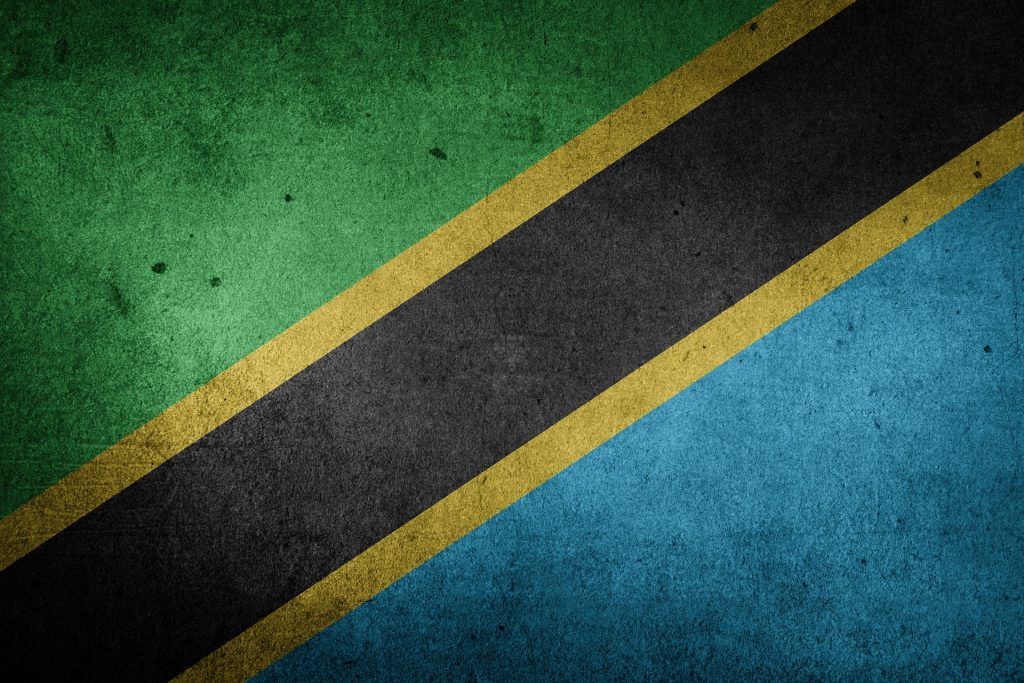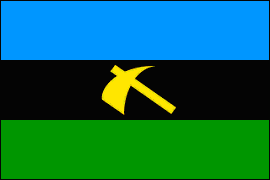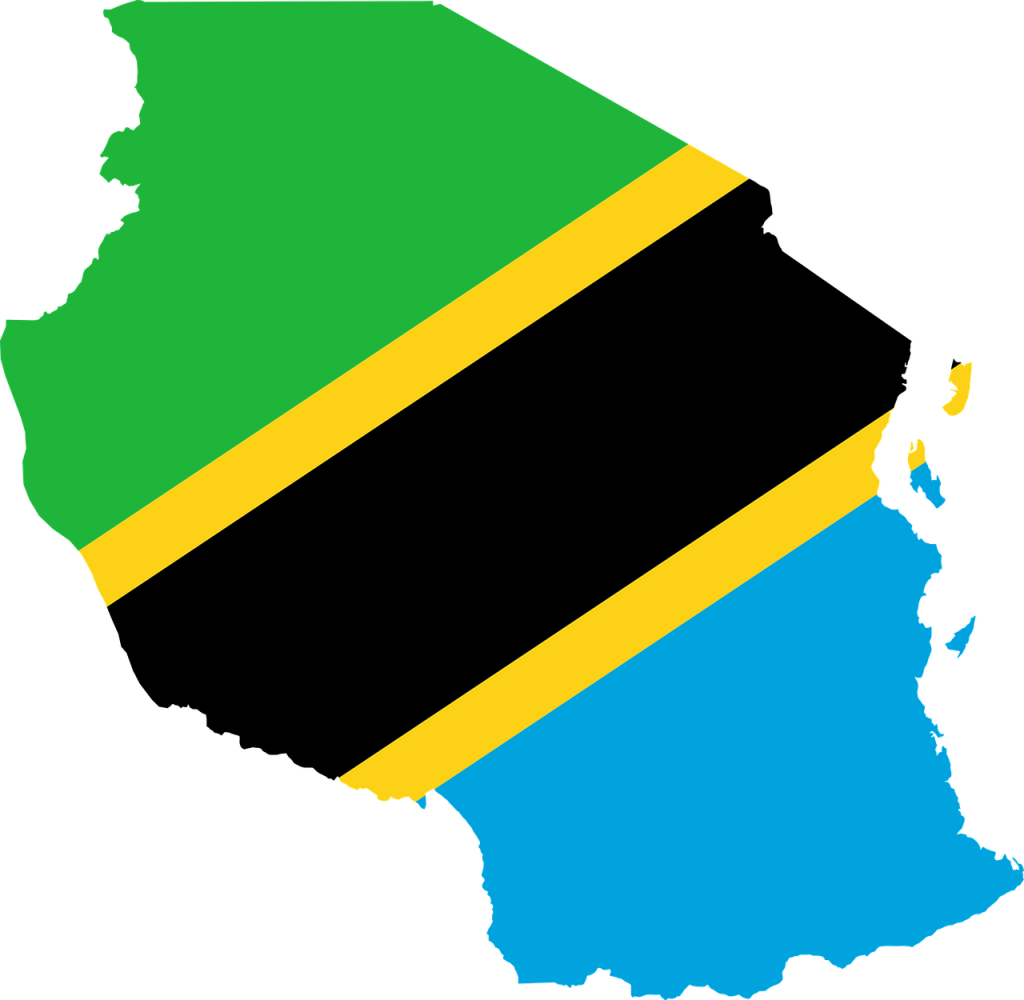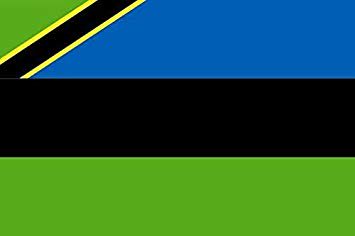The current flag of the United Republic of Tanzania is a combination of the two former states of Tanganyika and Zanzibar, which merged in 1964. Let’s look into some background information about the country and its flags first.

The Modern Tanzania Flag
The current flag consists of a solid black diagonal bar with a golden outline as seen above. Both sides of the bar are surrounded with blue and green fields. This has been the flag of Tanzania since 1964 after the merger of the states of Tanganyika and Zanzibar. The modern design includes the colors of both previous flags.
The roots of the colors can be traced back to the flag of the political party that ousted Zanzibar’s last Sultan and the ruling Arab minority during the Zanzibar Revolution of 1964. The Afro-Shirazi Party (A Marxist-Leninist/African Nationalist Party), became the new ruling party of the People’s Republic of Zanzibar and Pemba. This new republic was a unitary socialist state for less than a year. The Afro-Shirazi party took a more African nationalist turn as it gained power, but was diminished as unification set in.
As we can see in the flag below, the colors of blue, black, and green are clearly represented in 3 horizontal bars. The center is a common farming tool, used to emphasize the party’s political philosophy of a worker based society.

After the founding of the People’s Republic of Zanzibar and Pemba, the symbol in the center was removed due to the changed is political loyalties and the natural chaos of a new emerging order.
Unification
They adopted a black, green, and blue tricolor similar to the design of the party’s flag. Later that year, the two states of Tanganyika and Zanzibar united, retaining the colors of green and black from Tanganyika, and blue from Zanzibar. The name of the country came from merging the first two syllables of each state. “Tan” from Tanganyika, and “Zania” from Zanzibar. Julius Nyerere was the first president of this new united republic and is seen as the nation’s founding father. He was able to forge a new national identity and nationalized many industries, but did so under a unitary state.


Green symbolizes Tanzania’s rich natural resources and lush vegetation. Black stands for the native Swahili people. Blue alludes to the Indian Ocean and the various lakes and rivers in the country. The gold stripes represent mineral resources. Though President Nyerere practiced a form of African socialism, the flag vexillology emphasizes the aspects of the nation and its people, rather than political parties or ideologies.
Here’s an extra! Below is the flag of the island of Zanzibar, which remains as a semi-autonomous zone. As you can see, the flag of Tanzania was put in the upper-left hoist of the flag of Zanzibar. It’s quite an interesting design if you ask me.

If we go further back into the history of Zanzibar, we can discover the Sultanate of Zanzibar, which used a plain red flag as its national ensign. This has absolutely nothing to do with communism of course, in fact it’s quite the opposite. The Sultanate of Zanzibar was ruled by a tiny Arab minority who have their roots in Oman, as Zanzibar was once part of the Sultanate of Oman. This plain red flag was also used when Zanzibar was a British protectorate.
The Tanzania capital is Dodoma. The former capital and largest city of Tanzania is Dar es Salaam. In 1974 the capital was officially moved to Dodoma, though the process took decades, not being finalized until 1996. Dar es Salaam is often seen as a second “capital” because of its economic, geographical, and historical importance.
Please consider Young Pioneer Tours Summer Safari in 2022!!





